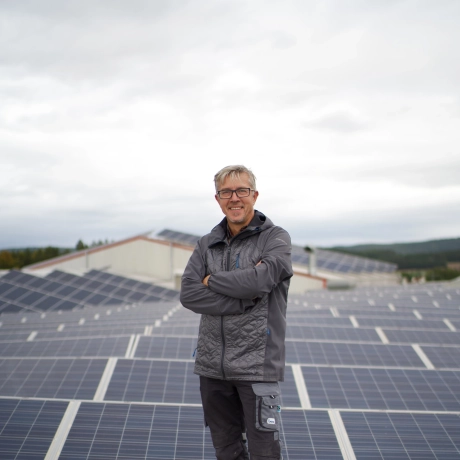

With our climate-neutral production, we have been setting an example for climate protection since 2015. We take responsibility for what we can control and directly influence ourselves. This includes emissions generated during our production in the areas of waste, energy, raw materials, logistics and employee mobility.

Since 2015, we have been able to reduce emissions from 8.394 kgCO2 per tonne of concrete to 2.425 kgCO2 per tonne of concrete and have been climate-neutral at our sites in Fensterbach, Berlin, Kirchheim unter Teck, Maitenbeth and Wonfurt ever since. We are constantly working to minimize this value even further. Thanks to the switch from 2018 to 2022, 1.3 millionm3 ofCO2 were avoided and not emitted. We offset unavoidable emissions with myClimate in the Gold Standard and fulfill 10 of the 17 Sustainable Development Goals of the United Nations. We are already using cement substitutes to minimize theCO2 impact of our products. At the same time, we are optimizing our concrete formulas to be able to produce concretes that store moreCO2 than conventional ones.
Since 2016, all of the electricity we use has come from renewable sources: we produce 30% of the electricity we need with our own photovoltaic systems, the first of which were connected to the grid back in 2009. We obtain the rest from certified green electricity suppliers. On sunny days, our production in Fensterbach is completely self-sufficient in electricity.
Our goal is to double the amount of electricity we produce ourselves by 2025 by installing more photovoltaic systems.



By investing in a central wood chip heating plant to recycle non-repairable pallets, we save 45,000 liters of heating oil every year. Instead of fossil fuels such as oil, we rely on renewable fuels. We use them to heat the entire maintenance department, our concrete factory as well as the office and social building.

The transportation area is made up of internal and external components. The in-plant area (wheel loaders, tractors, forklifts, e-caddies and bicycles) is subject to our direct control and influence. Currently, 60% of the plant's internal vehicle fleet is equipped with alternative drive systems. The aim is to convert 90% of the remaining internal fleet to alternative drives, primarily gas, by 2025. External transportation is divided into raw material deliveries and product deliveries, which are carried out by partner haulage companies and eleven company-owned trucks. Six of the company's own trucks have now been converted to bio-LNG. Thanks to the alternative drive, we save 100%CO2 compared to diesel.
Since 2015, we have been separating all waste at our sites and passing it on to recycling companies in sorted form. We also want to avoid waste as much as possible in the future and reduce it to a minimum. We rely on recyclable materials in production, packaging, shipping, administration and maintenance. Our goal: in the coming years, 50% of our films should be made from recycled materials; we are currently at 30%. We want to increase this proportion to 80% by 2025.

We are continuing to work intensively on increasing energy efficiency in production in Fensterbach and Freihöls and are preparing the expansion of renewable energies on company-owned land in order to make a contribution to climate protection. Once again, we can count on a 40% subsidy from the Bavarian Ministry of Economic Affairs (STMWi). As part of the subsidized operational energy concept, the energy inventory after various company expansions and conversions was examined in greater depth and the thermal and electrical energy supply, as well as CO2 emissions, were examined in a scientifically neutral manner.
One of the focal points of the investigations was the restructuring of the site in Fensterbach and the possible expansion of renewable energies such as photovoltaics for in-house electricity use. In addition, energy efficiency and energy-saving measures were analyzed and evaluated technically and economically in the usual manner. In addition to the analysis of energy recovery in the operation of electric motors, heat recovery in the drying chambers and compressed air generation, the production of hydrogen from surplus electricity was also investigated, as was the further expansion of PV use, e.g. in the form of floating PV systems in the Freihöls sand pit. Once again, technically and economically viable measures were identified, which will now be transferred to our energy management system and implemented in the coming months and years.